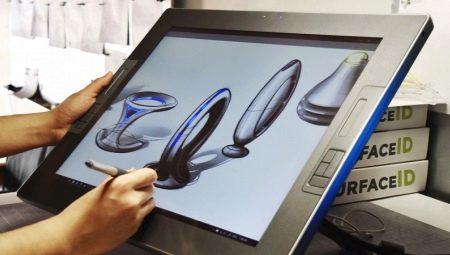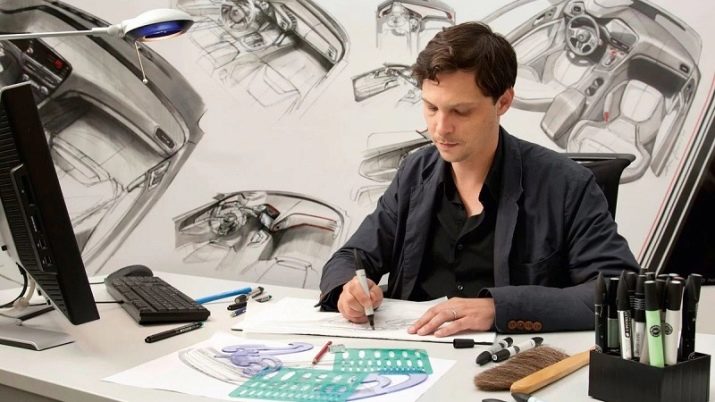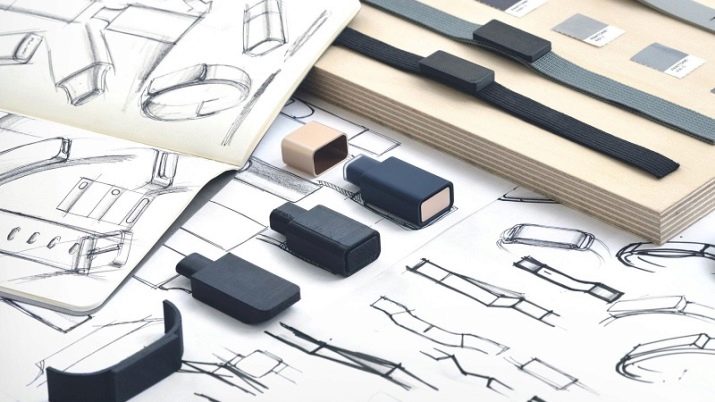Industrial designer: the specifics of the profession and job description

Design is associated with advertising and marketing in the minds of most people. But there are also industrial designers who have a completely different specificity of the profession. Knowledge of its features and job description will be very useful for everyone who decides to devote themselves to such work.
The specifics of the profession
The work of an industrial designer, as in other areas of design, is aimed at visualizing an idea. Only the object to which this visualization is applied is different. At the same time, one cannot completely surrender to the will of one's own imagination. Design is all about using your imagination to achieve clear goals. The industrial designer consistently deals with such stages of the development of the finished product as:
- thinking through a common idea:
- formation of a clear concept;
- preparation of sketches;
- creation of layouts;
- 3D modeling of the finished product;
- final design;
- creation of a prototype.
A designer in industry doesn't just “make beautiful”; he must take into account the characteristics of a particular product and its future use... It is necessary to have not only a subtle aesthetic taste, but also a clear idea of how to avoid fatal mistakes. Even errors in the design of household appliances can lead to serious consequences - let alone cars or medical equipment.
It is generally accepted that industrial design has "spun off" from architecture and is guided by its standards of professional excellence.

Advantages and disadvantages
Industrial design is a consistently demanded field of activity. In any production today, it is important to present a product that people would like and would be adapted to their needs, and not just solve some problems. The pay for this profession is relatively high. The activity itself is creative.
The negative sides are a logical continuation of the merits. So, for a high pay, you will have to work quite a lot. And the creative nature of the activity means that there will be no ready-made solutions. The search for the best option will have to inevitably be invested in a limited time frame. It will take a long time to study and gain the necessary qualifications.
The working day of an industrial designer cannot be standardized by definition, and what will ultimately turn out, customers will begin to evaluate purely subjective.

Job description
An industrial design specialist is usually appointed and removed from the position by decision of the CEO. The presentation is made by the chief engineer or the head of the project department. The job description must prescribe the requirements for educational training. Usually this is a higher education without work experience or secondary vocational training with at least 2 years of experience in the specialty. An industrial designer must know:
- regulations of the Russian Federation in the field of labor law, labor organization and copyright;
- design preparation for production;
- ergonomic requirements;
- computer programs (not only graphic editors, but also text, browsers, presentations, and other necessary software);
- techniques for working out sketches, forming physical models, compositional rules and proportions;
- principles of using color and shape;
- approaches to design;
- development prospects of a particular company and its current state;
- technical parameters and economic characteristics of the optimal products of Russian and foreign competitors;
- computer-aided design systems;
- principles of certification.

Also important for an industrial designer:
- the ability to draw up and read drawings, other design and production documentation;
- knowledge of the basics of office work;
- the ability to use Internet resources for professional activities;
- the procedure for technical calculations in the design process;
- production technology;
- the main parameters of the materials used in the created products;
- the basics of artistic and graphic work;
- fundamentals of patent science;
- the economics of the organization.
Among the job responsibilities, it is especially worth emphasizing the preparation of sketches and layouts (independently and together with other people). You will also have to deal with the manufacture of physical and virtual models. Industrial designers:
- develop layout diagrams and compositions;
- select the optimal construction and finishing solutions;
- ensure that the product meets ergonomic standards;
- detail the shape of the product;
- prepare artistic design proposals.

Personal qualities
A specialist in industrial design always thinks first of all about the end user, and not about his own convenience. It is extremely important for him to be able to think outside the box and look for those solutions that are inaccessible to an ordinary engineer. In such a position, only a person capable of processing large amounts of information can fit. You will have to be observant and concentrate on details, while not missing the general perspective. An industrial designer will also have to:
- constantly communicate with people;
- be able to work in a team;
- show reasonable initiative, while strictly following the general instructions;
- to be tactful and careful in dealing with customers and their representatives.
Training and salary
Many educational institutions offer to study to become an industrial designer. But it is worth giving preference to large universities, where the quality of training is higher... Monthly and even half-year courses will give maximum basic information about design work. Preparing to associate yourself with her, it is advisable to get an art education after school. The composition and drawing will be checked in exams in any educational institution. The best positions in the labor market are held by graduates of Moscow State University, St.
The first two courses provide general subjects and an introduction to the profession. From the 3rd, they master professional skills. A four-year bachelor's degree does little and the graduate earns very little.
Even well-trained industrial designers pay 20-30 thousand rubles at the initial level. With experience, employees can earn 40-55 thousand.









